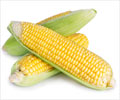High-fructose consumption may up the risk of non-alcoholic fatty liver disease (NAFLD).
- Intake of high-fructose corn syrup foods may up the risk of Non-Alcoholic Fatty Liver Disease (NAFLD)
- High-fructose corn syrup is a sweetener made from corn flour. It is added to foods and soft drinks as a cheaper alternative to sucrose
- Consuming fewer foods and beverages with high-fructose corn syrup can prevent the development of NAFLD
What is High-Fructose Corn Syrup?
Fructose is natural sugar present in fruits, fruit juices, certain vegetables and honey. In these forms, fructose sugars can be part of a nutritious diet. However, fructose is also a component of high-fructose corn syrup which manufacturers make from corn starch and add to unhealthy foods such as sodas and candies. High-fructose foods have been associated with metabolic disorders such as obesity and diabetes, which are the two main causes of NAFLD.“NAFLD is a serious problem and it is increasing in the population. There is a racial/ethnic difference in the prevalence of the NAFLD. People consume high-fructose corn syrup in foods, soft drinks and other beverages. Some studies suggested that consumption of high-fructose corn syrup is related to the development of NAFLD,” said lead author Theodore Friedman, MD, PhD, of Charles R. Drew University in Los Angeles, CA.
High-Fructose Corn Syrup and Liver Disease
For this study, the researchers analyzed data from 3,292 participants enrolled in the National Health and Nutrition Examination Survey 2017-2018. They found the greatest proportion of those who consumed the highest fructose were Mexican Americans (48%) and non-Hispanic Blacks (44%) with a low percentage of non-Hispanic whites (33%). The highest prevalence of NAFLD was among Mexican Americans who consumed the highest amount of fructose (70%).“We found that when adjusting for the demographics and behavioral factors (smoking, modest alcohol consumption, diet quality and physical activity), high-fructose consumption was associated with a higher chance of NAFLD among the total population and Mexican Americans,” Friedman said.
A better fitting model emerged when the researchers additionally adjusted for body composition and laboratory variables, where they found that high-fructose consumption was related to higher chances of NAFLD in the total population, Mexican Americans and Whites.
“High fructose consumption in Mexican Americans contributed, in part, to the health disparity of NAFLD,” Friedman said.















